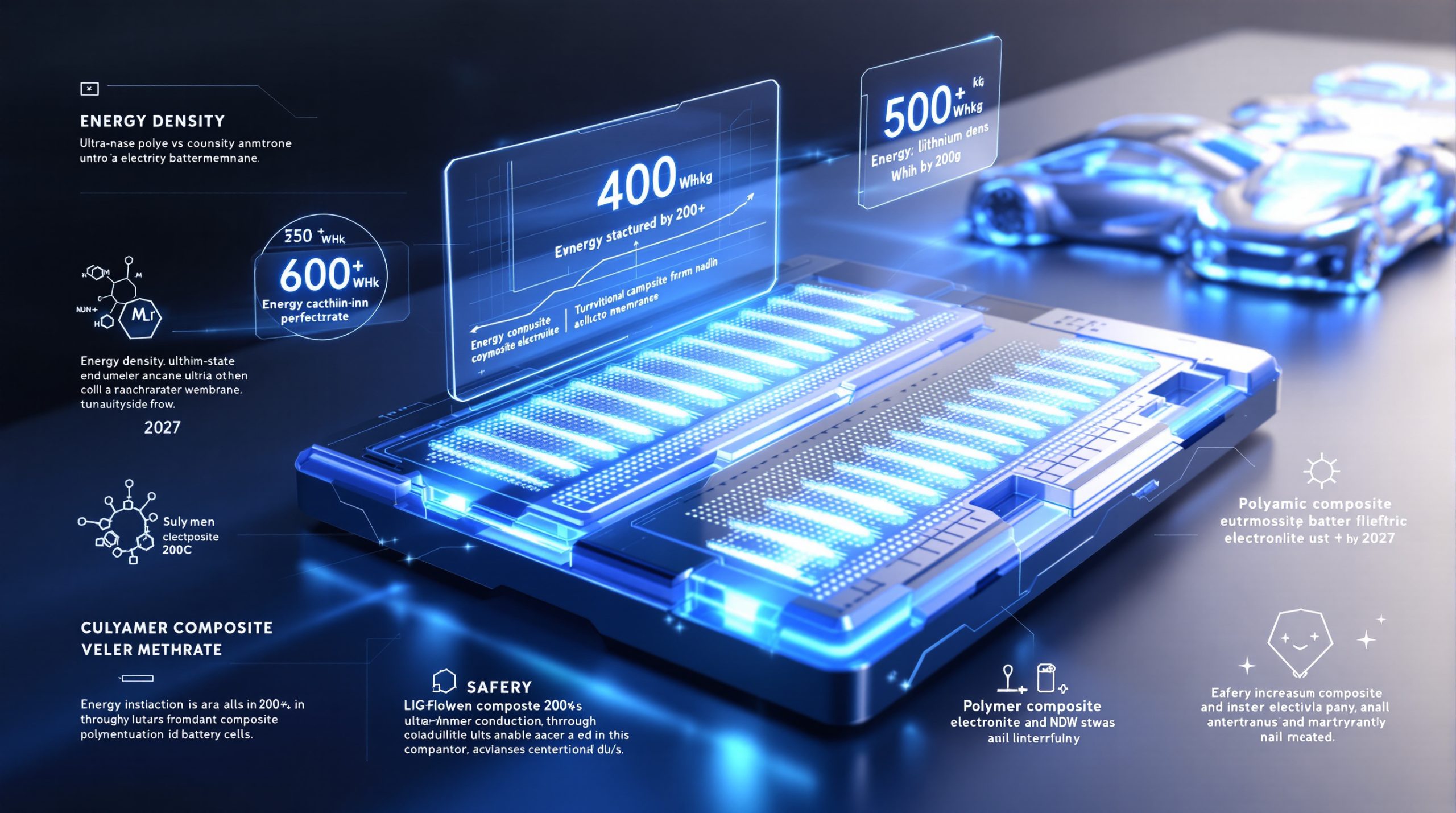What is KoBold Metals and Why Does Their DRC Move Matter?
KoBold Metals has emerged as one of the most innovative players in the global mining industry, distinguished by its revolutionary approach to mineral exploration. Backed by tech billionaires Bill Gates and Jeff Bezos through Breakthrough Energy Ventures, this AI-powered mining company has been making strategic moves that could reshape critical mineral supply chains worldwide.
The company's latest venture into the Democratic Republic of Congo (DRC) lithium sector represents a significant milestone in its ambitious expansion strategy. With a portfolio spanning approximately 60 active projects across four continents, KoBold is rapidly positioning itself as a dominant force in the mining industry's technological transformation.
The AI-Powered Mining Disruptor
Unlike traditional mining companies, KoBold Metals has built its competitive advantage on cutting-edge artificial intelligence and machine learning algorithms. These proprietary technologies analyze vast datasets including historical geological surveys, satellite imagery, and geophysical measurements to identify potential mineral deposits with unprecedented precision.
The company's unique approach combines:
- Advanced machine learning models that recognize patterns invisible to human geologists
- Real-time data processing capabilities that continuously refine exploration targets
- Predictive algorithms that estimate mineral concentrations before drilling begins
- Integration of diverse data types including electromagnetic surveys and chemical analyses
This technological edge has attracted substantial backing from some of the world's most prominent tech investors. Bill Gates and Jeff Bezos, through Breakthrough Energy Ventures, recognized KoBold's potential to revolutionize how critical minerals for energy are discovered and extracted.
The Significance of the Manono Lithium Project
KoBold's entrance into the Manono lithium project in southeastern DRC represents a strategic coup in the global race for battery metals. This massive deposit is considered one of the world's largest hard rock lithium resources, with estimated reserves of 669 million tonnes of lithium-bearing ore.
What makes Manono particularly valuable:
- Scale: Its sheer size places it among the top three global lithium deposits, behind only Thacker Pass (USA) and Greenbushes (Australia)
- Quality: High-grade spodumene with favorable extraction economics
- Strategic location: Positioned in Central Africa's mineral-rich copper belt
- Development potential: Capacity to produce an estimated 1.2 million tonnes of lithium carbonate equivalent annually at full operation
The project's development timeline projects initial production by 2028, with KoBold committing a substantial $1 billion investment for infrastructure and mining operations. This timeline positions Manono to enter production just as global lithium demand is projected to triple from current levels, driven primarily by electric vehicle battery manufacturing.
"Manono could supply up to 15% of global lithium demand by 2030, making it a cornerstone asset in the clean energy transition," according to mining industry analysts.
How Will This Acquisition Resolve the Ownership Dispute?
The path to KoBold's involvement in Manono has been complicated by years of legal battles and competing claims that have stalled development of this world-class resource. Understanding this complex background is essential to appreciating the significance of KoBold's entry into the project.
The Complex Legal Background
The ownership controversy dates back to 2023, when the DRC government made the controversial decision to revoke mining rights previously granted to Australian company AVZ Minerals. This decision triggered a cascade of legal challenges that have since entangled multiple international companies and jurisdictions.
The dispute's timeline includes:
- 2018-2022: AVZ Minerals conducts exploration and secures what it believed were valid mining permits
- Early 2023: DRC government unexpectedly revokes AVZ's rights, citing regulatory compliance issues
- Mid-2023: China's Zijin mining expansion asserts claims to the northern section of the deposit
- Late 2023: International arbitration proceedings commence in multiple jurisdictions
- 2024: Legal stalemate continues, preventing meaningful development of the resource
The involvement of Chinese mining giant Zijin further complicated matters, as it claimed rights to the northern section of the deposit based on separate agreements with local partners. This created a geopolitical dimension to what began as a regulatory dispute, with Western and Chinese interests competing for control of this strategic resource.
The Framework Agreement Structure
KoBold's entry represents a potential breakthrough in this protracted dispute. The company has proposed a framework agreement that would:
- Compensate AVZ Minerals for its initial exploration work and partial claim settlement
- Divide the massive deposit geographically – with KoBold developing the southern portion while Zijin retains rights to the northern section
- Commit $1 billion for project development over a 5-year timeframe
- Establish clear boundaries and operational independence between the two zones
This arrangement offers a pragmatic solution that acknowledges the political realities while allowing development to proceed after years of delays. The agreement requires several conditions to be met:
- Formal regulatory approvals from DRC mining authorities
- Resolution of pending arbitration cases
- Environmental impact assessments
- Community benefit agreements with local stakeholders
If successfully implemented, this framework would transform a contentious legal standoff into a productive arrangement that benefits all parties while accelerating the development of a critical energy transition resource.
What Are the Geopolitical Implications of This Deal?
The KoBold-Manono agreement extends far beyond business considerations, touching on strategic mineral security, great power competition, and the DRC's evolving diplomatic position in the global resource landscape.
US Strategic Minerals Policy
The United States has increasingly recognized critical minerals as a national security priority, with the Biden administration implementing multiple initiatives to secure supply chains independent of Chinese control. KoBold's entry into DRC aligns perfectly with these strategic objectives.
Key elements of the US approach include:
- The Inflation Reduction Act's provisions incentivizing non-Chinese mineral sourcing
- Formation of the US-EU Critical Minerals Agreement (2023) to coordinate Western access
- Diplomatic outreach to mineral-rich nations, particularly in Africa
- Support for private sector investments in strategic deposits
This policy framework received concrete expression when Senior Advisor Massad Boulos met with DRC President Félix Tshisekedi to discuss mineral cooperation. These high-level diplomatic engagements signal the elevation of critical minerals to a top-tier foreign policy priority for the United States.
The KoBold deal represents a significant win for this strategy, establishing a foothold for a US-aligned company in one of Africa's most important lithium resources, previously at risk of falling under exclusive Chinese influence.
DRC's Resource Diplomacy Strategy
From the Congolese perspective, KoBold's entry reflects a sophisticated balancing act between competing global powers. The DRC government has strategically leveraged its vast mineral wealth to secure both economic and security benefits.
President Tshisekedi's administration has:
- Offered preferential access to critical minerals in exchange for security assistance
- Sought international support in addressing ongoing conflicts in mineral-rich eastern regions
- Balanced relationships between traditional Chinese investors and new Western partners
- Prioritized processing and value addition within DRC borders
"Congo is carefully balancing Western investors against its traditional Chinese partners to maximize benefits while maintaining sovereignty over its resources."
The country continues to face significant security challenges, particularly in its eastern provinces where armed groups control some mining areas. Rwanda's alleged involvement in these conflicts adds another layer of complexity to the DRC's resource governance challenges.
By diversifying its international partnerships through deals like the KoBold agreement, the DRC government aims to strengthen its negotiating position while securing the stability necessary for sustainable economic development based on its mineral wealth.
How Does This Fit Into KoBold's African Expansion Strategy?
KoBold's Manono acquisition represents not a standalone investment but part of a coherent continental strategy that has already yielded significant success in neighboring Zambia. This pan-African approach positions the company to capitalize on the region's vast untapped potential for critical minerals.
Zambia Success Story
KoBold's credibility in the region was established through its landmark copper discovery in Zambia, widely described as the largest in a century. The Mingomba copper project, a $2 billion joint venture with BlueJay Mining, demonstrated the company's ability to apply its AI-driven mining solutions to African geology with remarkable results.
Comparing KoBold's Zambian and DRC operations:
| Aspect | Zambia (Mingomba) | DRC (Manono) |
|---|---|---|
| Primary Mineral | Copper | Lithium |
| Secondary Resources | Cobalt, Gold | Tin, Tantalum |
| Discovery Method | AI-driven exploration | Acquisition of known deposit |
| Infrastructure | Established mining region | Remote, limited infrastructure |
| Political Stability | Higher | Medium |
| Development Stage | Early development | Pre-development |
This strategic positioning in Africa's two largest copper-producing nations gives KoBold unique advantages in the copper-cobalt belt that stretches across the region. The company can leverage operational synergies, regional expertise, and relationships with governments and communities across these neighboring countries.
AI-Driven Exploration Advantages
KoBold's technological approach provides distinct advantages in the African context, where vast areas remain underexplored despite significant geological potential. The company's AI systems can:
- Reanalyze historical exploration data with modern computational methods
- Identify promising targets missed by conventional techniques
- Reduce exploration costs by focusing drilling on high-probability locations
- Process multiple data types simultaneously for comprehensive geological modeling
This approach has reportedly accelerated discovery timelines by up to 80% compared to traditional methods, while substantially reducing the environmental footprint of exploration activities. In regions like central Africa with limited geological survey coverage, these capabilities provide a crucial competitive edge.
Beyond the initial targets at Manono, KoBold's technology positions it to potentially identify additional lithium-bearing zones or other critical minerals within its concession area. The company's machine learning models continuously improve as they incorporate new data from each exploration program, creating a virtuous cycle of discovery.
What Impact Will This Have on Global Lithium Markets?
KoBold's development of Manono will significantly influence global lithium supply chains, pricing dynamics, and the competitive landscape for battery materials. The timing of this project coincides with projected supply shortfalls as electric vehicle adoption accelerates worldwide.
Supply Chain Implications
When fully operational, Manono has the potential to produce approximately 1.2 million tonnes of lithium carbonate equivalent annually. This massive output would represent a substantial portion of global supply, potentially:
- Increasing global lithium production by up to 15%
- Diversifying supply away from the "lithium triangle" of Chile, Argentina and Bolivia
- Offering Western manufacturers a significant non-Chinese controlled source
- Altering pricing dynamics in what has been a volatile commodity market
The project's targeted production timeline of 2028 places it at a critical juncture when lithium demand is expected to exceed current production capacity by nearly 40%. Major battery and EV manufacturers are already seeking to secure long-term supply agreements to mitigate this anticipated shortage.
KoBold's entry creates opportunities for strategic partnerships with:
- Electric vehicle manufacturers seeking supply security
- Battery cell producers requiring consistent lithium hydroxide or carbonate
- Energy storage system developers expanding beyond consumer electronics
- Western governments promoting domestic battery manufacturing
These potential offtake agreements could provide the financial certainty needed to accelerate Manono's development timeline, potentially bringing production online earlier than currently projected.
Environmental and Social Considerations
Beyond market implications, KoBold's approach to developing Manono will establish important precedents for environmental and social governance in DRC's mining sector. The company has indicated plans to implement:
- Renewable energy integration for mining operations
- Water conservation and recycling systems
- Local workforce development programs
- Community infrastructure investments
- Transparent environmental monitoring and reporting
These commitments will face close scrutiny, as environmental practices at global lithium operations have come under increasing criticism. Hard rock lithium mining, while generally less water-intensive than brine operations in South America, still presents significant environmental challenges including energy use, waste rock management, and chemical processing impacts.
For the local communities around Manono, the project represents both opportunity and risk. KoBold's modern mine planning approach will need to address:
- Fair compensation for land use
- Meaningful local employment and procurement
- Infrastructure development benefiting broader communities
- Environmental safeguards protecting water and agricultural resources
- Transparent benefit-sharing arrangements
The project's ESG performance will likely influence how future Western mining investments in DRC are evaluated, placing additional responsibility on KoBold to establish positive precedents.
FAQ: KoBold's DRC Lithium Investment
What makes the Manono lithium deposit globally significant?
The Manono lithium project stands among the world's premier hard rock lithium resources, distinguished by several exceptional characteristics:
- Scale: With 669 million tonnes of estimated resources, it ranks as the third-largest global lithium deposit by volume
- Grade quality: The deposit contains high-grade spodumene with lithium oxide (Li₂O) concentrations averaging 1.65%
- Mineral diversity: Beyond lithium, the site contains valuable tin and tantalum resources
- Geological accessibility: The pegmatite formations allow for conventional open-pit mining methods
- Expansion potential: Exploration to date has focused on known zones, with significant unexplored areas remaining
Compared to other major global lithium sources, Manono offers the advantage of being a hard rock resource rather than a brine operation. This allows for more consistent production regardless of seasonal variations and potentially lower water usage compared to South American operations in arid regions.
How does KoBold's AI technology provide competitive advantages?
KoBold's proprietary artificial intelligence platform represents a fundamental shift in mineral exploration methodology. The company's technological edge comes from:
- Machine learning algorithms that identify subtle patterns in geological data invisible to human analysis
- Integration capabilities combining diverse datasets including geochemical sampling, geophysical surveys, satellite imagery, and historical drilling results
- Predictive modeling that generates probability maps for mineral presence before expensive drilling programs
- Real-time analysis allowing exploration strategies to adapt as new data becomes available
- Reduced environmental impact through more precise targeting requiring fewer exploratory drill holes
This approach has reportedly accelerated discovery timelines by up to 80% while substantially improving success rates compared to conventional methods. At Manono, these technologies could identify additional resource zones beyond the currently defined deposit boundaries, potentially expanding the project's value considerably.
What are the major risks facing this project?
Despite its tremendous potential, the Manono project faces several significant challenges that could impact development timelines and ultimate success:
- Political stability: While the DRC's central government has stabilized, eastern regions continue to experience conflict that could affect logistics and security
- Infrastructure limitations: The remote location lacks adequate road, rail, and power infrastructure necessary for large-scale mining operations
- Regulatory uncertainty: DRC's mining code has undergone frequent revisions, creating compliance challenges for international operators
- Legal resolution: Complete resolution of competing claims remains pending, with potential for renewed disputes
- Market volatility: Lithium prices have demonstrated significant fluctuations, affecting project economics
- Chinese competition: Zijin Mining's presence in the northern section creates potential for competitive tensions
- Community relations: Ensuring local support requires substantial community engagement and benefit-sharing
These risks require careful management strategies, including robust government relations, community partnership programs, and flexible operational planning to adapt to evolving circumstances.
How might this affect other lithium producers globally?
KoBold's entry into Manono will resonate throughout the global lithium industry in several ways:
- Australian producers: Currently dominating hard rock lithium supply, Australia lithium innovations may face increased competition as Manono reaches production
- South American operations: Brine producers in the "lithium triangle" may accelerate technology adoption to maintain cost competitiveness
- Project timelines: Other developing lithium resources may accelerate development schedules to secure market position before Manono production
- Industry consolidation: Smaller producers may seek mergers or acquisitions to compete with emerging large-scale operations
- Processing innovation: Pressure to reduce costs may drive technological advancements in lithium processing and refining
The emergence of Manono as a major supplier will likely accelerate the industry's evolution from a relatively niche market to a mature, large-scale commodity business with more sophisticated price discovery mechanisms, standardized contracts, and potentially even futures markets.
For battery manufacturers and EV producers, Manono's development offers welcome supply diversification but also requires careful monitoring of how new production affects pricing dynamics in their supply chains.
The Future of AI-Driven Mining in Africa
KoBold's expansion into DRC lithium represents more than just a single project investment – it signals a broader shift in how Africa's vast mineral resources may be developed in the coming decades. The integration of artificial intelligence with traditional mining expertise creates opportunities for more efficient, sustainable resource development across the continent.
Technology Transfer and Capacity Building
For African nations like DRC and Zambia, partnerships with technology-driven companies like KoBold offer potential pathways for:
- Knowledge transfer in advanced geological analysis
- Training opportunities for local scientists and engineers
- Development of domestic technical capabilities
- More precise resource mapping and national planning
As KoBold establishes operations in multiple African nations, the company has an opportunity to contribute to regional capacity building through educational partnerships, technical training programs, and collaborative research initiatives with local universities and geological surveys.
Ready to Stay Ahead of the Next Major Mineral Discovery?
Discover why investors tracking companies like KoBold Metals gain significant advantage with real-time alerts on ASX mineral discoveries through Discovery Alert's proprietary Discovery IQ model, transforming complex exploration data into actionable insights. Visit our dedicated discoveries page today to understand how major mineral discoveries have historically generated substantial returns for early investors.




